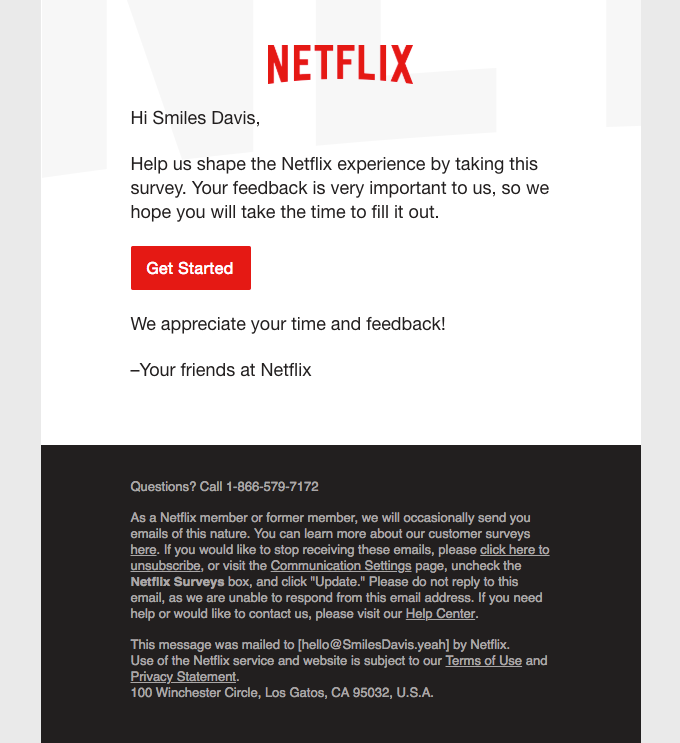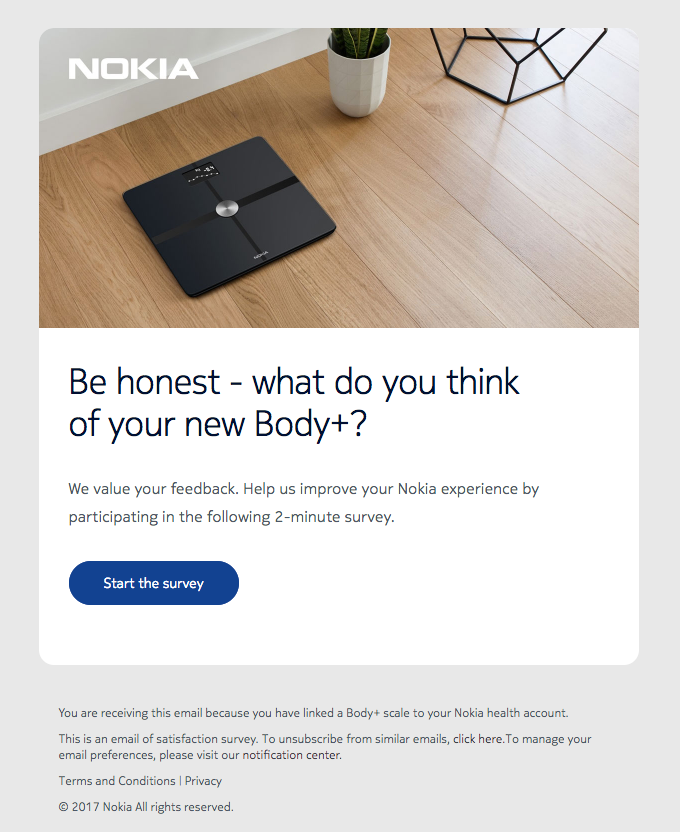We’re always striving to meet the demands of our customers, whether this means that we jump on the latest trends or stick with what has worked for us in the past.
However, if there’s one surefire way to guarantee that we are meeting our customer’s expectations, it’s to simply ask them outright.
77% of customers favor brands that request feedback. Why? Because it shows that the brand values its customer’s opinions. It also establishes a much more genuine, mutually beneficial B2C relationship, which is awesome for your long-term customer retention and satisfaction goals.
When it comes to gathering customer feedback, even the best VoIP app cannot compare to the efficiency of email. You can send messages in bulk, personalize content, embed quick questions, and link easily to surveys.
Your customer feedback is some of the most helpful information that you can acquire, so it’s crucial that you gather it on a regular basis. Here are some top tips to help you gain valuable customer feedback via email.
Start With an Eye-Catching Subject Line
If you can’t get your reader to actually open your email, then all of your subsequent efforts become useless.
Your subject line needs to grab the attention of your recipients as they skim through the sea of unread messages in their inboxes. It also has to hint at the email’s contents while being intriguing enough for them to actually open it – all in the space of a few words.
Fortunately, there are plenty of tricks that you can use to come up with the best email subject lines for your customer feedback emails. For example, using your recipient’s first name, asking them a question, being humorous, or using an emoji can make your email stand out and increases the likelihood of it being opened.

Image Created by Writer
Because it’s such an integral part of the process, consider A/B testing your email subject line. A/B testing allows you to compare different subject line options on a small portion of your email list to see which one performs best. Take a look at some AB testing examples to get a feel of how it works.
Address the Recipient Personally
“Dear customer” has become such an archaic, impersonal greeting that many of us instinctively disregard these messages as irrelevant bulk marketing or spam. It gives off the impression that the sender didn’t care enough to do so much as learn our name, which is definitely not the message you want to put across if you’re asking a customer to do you a favor.
Show that you value your customer by greeting them by name. If you need to go a step further, inject some of your brand’s personality into the email too. Emojis, humor, puns, and images are all tools that you can use to engage your reader and with which to nurture a stronger relationship.
Keep It Short and Sweet
People are busy. Persuading them to take time out of their day to do you a favor isn’t the easiest of tasks. However, you’re much more likely to see engagement if the body of your email is short and snappy – seriously, a couple of sentences are all you need. Take a look at this email from Netflix as an example.

This email is simple and straight to the point, which is easy for a reader to digest and respond to.
Here are a few more ways that you can create a hassle-free customer experience:
- Let readers know beforehand how long the survey will take
- Only include necessary questions to avoid convoluting your survey
- Avoid questions with long-winded answers – multiple-choice is your friend!
- Add a progress bar or number your questions so that users can keep track of the process
Include an Incentive
If you can, consider offering your customer something in return for their participation. Not only is this a good strategy for gathering considerable customer feedback – after all, who doesn’t love a prize draw or discount? – it simultaneously re-engages your recipient with your brand, potentially turning dormant customers into active ones.
Incentives don’t have to break the bank either. Coupons, charity donations, free downloadables, and even members-only access are examples of affordable incentives that you could offer.
Send Emails to the Right Customers at the Right Time
If you’re asking for feedback on your customer service, you probably sholdn’t email someone who has only scrolled through your website. Similarly, you wouldn’t send a product feedback email to somebody who hasn’t bought anything yet.
While it sounds obvious enough, as your email list grows it can be difficult to keep track of individual customer’s buying journeys. By segmenting your customers into categories and utilizing email automation strategies, you can ensure that the right people are targeted at the right time.
Timing is particularly important for your customer service feedback emails, as you want to contact the recipient while their interaction with your brand is still fresh on their mind.
Finish With a CTA
A powerful CTA is an important part of any successful feedback request. Whether you want the recipient to reply to your email, answer an embedded question or take part in a survey, you need to make sure that you directly state the action that your user should take next.
It’s a good idea to make this part of the email stand out. You could use bold colors, fonts, or even imagery to draw attention to your CTA. And don’t forget to hyperlink if you’re directing them to a survey.

Conclusion
While you’ll never need to make another awkward cold call or forward a voicemail for lengthy transcription again, gathering customer feedback via email still requires considerable thought and effort.
Remember, simply persuading a customer to open your email in the first place is difficult enough, so you should definitely take some time to plan out the perfect subject line and automate your delivery to ensure that your emails are sent to the right people at the optimal time. From there, aim to address your recipients personally, offer them an incentive, and keep the process short and sweet to maximize the quality and quantity of your feedback.



